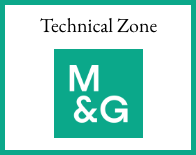John Monaghan, Research Director, Square Mile Investment Consulting and Research, highlights the red flags fund selectors should consider when determining whether a fund warrants further investigation.
The last few years have been challenging for those researching and selecting funds. The Covid pandemic, Russia’s invasion of Ukraine, a breakdown in global supply chains, high inflation and spiralling interest rates have all combined to create an extraordinary economic backdrop. The rotation from growth to value and back again, heightened volatility, sell offs across asset classes and subsequent rallies mean it can be difficult to assess fund manager performance objectively.
While this environment can be tricky to navigate, good fund managers – those that we rate at Square Mile – should adhere unwaveringly to their process, looking through short-term noise to remain focused on meeting their long-term objectives. The ability to exercise this level of discipline is frequently the best metric by which to judge a fund manager’s mettle. This means relative returns over shorter timeframes in isolation can be an imperfect guide as to whether a fund continues to merit a place within an investor portfolio.
Determining the red flags
What, therefore, are the red flags fund selectors should consider when determining whether a fund warrants further investigation? At Square Mile, we have a 20-strong team of fund analysts who regularly meet fund managers face-to-face and while performance in relation to a clearly articulated objective is undeniably important, we consider a range of qualitative factors which helps us decide whether a fund deserves one of a range of ratings and whether a rating should be upgraded, downgraded, suspended or removed altogether.
When reviewing funds at a basic level, in addition to monitoring performance within the context of the manager’s performance aspirations, fund researchers should also consider factors including in/outflows and any changes to fund management teams. In doing so, advisers can be cognisant of key indicators that may affect a fund’s current performance and the likelihood that it will perform as expected in the future.
Fund managers do not operate in a vacuum and a major consideration beyond performance relates to personnel issues that could impact the viability of an investment proposition. For instance, a high turnover among those responsible for managing, or providing input or oversight into the strategy should prompt further investigation as it could be indicative of broader discontent within the working environment. If a fund manager leaves, is their fund temporarily orphaned or is there a tried and tested team in place to ensure continuity, how long was any succession plan and has there been a successful transition to a new manager? Should a new fund manager be appointed to take over a strategy, what is their track record in running similar assets historically? And perhaps most importantly will there be a material change to the investor experience – i.e., will the fund risk/return profile change dramatically under a new manager?
At a time when consolidation within the asset management industry continues at pace, paraplanners should be mindful of the impact of any M&A activity. How successfully has the acquirer managed the integration of investment teams in the past? Are managers and investment teams generally left to run money as before or has an acquisition been a precursor to departures? What overlap is there between fund ranges and are any strategies likely to be merged? Although Square Mile does not conduct operational due diligence on asset management firms, operational repercussions and any concerns over the long-term viability of an investment firm should also be assessed, including non-investment resources such as compliance, risk management, sales and client services and marketing.
From an investment perspective, significant divergence from an established process and philosophy is likely to cause concern and it is important to establish the reasons behind any shift in investment objectives or styles. It could be that such action is justified as a short-term tactical move to take advantage of new opportunities – if that is the case, this should be clearly explained in any fund commentary. In the absence of this kind of transparency, it is essential to establish whether a fund manager has jettisoned a long-held approach to managing money. Understanding how a fund might perform in a range of market conditions is an important element in determining its suitability and the process adopted by the manager underpins that decision. Should there be a significant change in that process, it is very possible that the strategy will no longer fulfil the objective for which it was chosen.
Linked to this, is a change to what we term the fund’s expected outcome. Investors have real world needs to meet and it is a fund selector’s duty is to match a strategy to their long-term financial objectives. We assign one of a combination of four investment outcomes to each fund – income, capital accumulation, capital protection and inflation protection – based on a fund manager’s objective and process. Comparing a fund’s actual performance against its expected outcome can highlight any need for further investigation in light of any notable divergence from it.
Digging deeper
It is one thing to identify red flags but knowing where to look for them is another thing altogether. After all, fund groups are unlikely to publicise any developments that reflect negatively on their operations. Nonetheless, their websites can be a good starting point as they should be depositories of useful information such as fund factsheets (well, those that actually provide meaningful information!) and commentary, assessment of value reports and news updates. The level of transparency and availability of this information can be a good indication of how a business conducts itself and the accountability it takes for the performance of its products.
The media also plays an important role in alerting paraplanners to developments affecting the funds they recommend. News of changes to investment teams, fund launches, changes to existing strategies and the analysis of performance and fund flows is the bread and butter of the investment trade press. In addition, there are other real time sources of insight that advisers can turn to. At Square Mile, for instance, we publish updates on all rated funds whenever our analysts take action following a review of a strategy or as a result of changes at a fund management or corporate level.
Navigating red flags in fund management is never easy. It requires diligence, proactivity and ultimately curiosity. Nonetheless, solid, objective research empowers advisers in determining when action is required and supports them in their fundamental duty of safeguarding their clients’ savings and helping them achieve their long-term financial security.
































